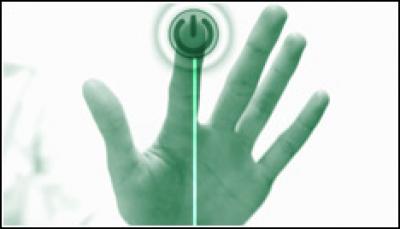Tesla Powerwall Battery Launched To Power Homes

Carmaker reveals rechargeable lithium-ion battery unit that stores solar power for homes and businesses
US electric carmaker Tesla Motors has unveiled a rechargeable battery system that could power people’s homes, and help lessen their reliance on the national grid for their energy need.
The rechargeable lithium-ion battery unit called Powerwall is to be constructed using the same batteries Tesla produces for its electric vehicles. However unlike its cars, the Powerwall system will store solar energy, and will power a home and serve as a back-up system for homeowners during power cuts.
Power Backup
Telsa’s founder, Elon Musk launched its Powerwall system on Thursday. He explained the system is a home battery that charges using electricity generated from solar panels, or when utility rates are low (in the early hours for example).
It can be used to power a home during the evening and morning, and also safeguards a house against power outages by providing a backup electricity supply.
 “Automated, compact and simple to install, Powerwall offers independence from the utility grid and the security of an emergency backup,” said Telsa.
“Automated, compact and simple to install, Powerwall offers independence from the utility grid and the security of an emergency backup,” said Telsa.
Telsa points out that the typical home tends to use the most power in the morning and evening. During the day solar energy is plentiful, but it is when the sun is down or about to rise, that homes typically use the bulk of their energy. This means that houses with solar panels will often sell the power company their excess solar energy during the day, but then buy it back in the morning and evening.
“This mismatch adds demand on power plants and increases carbon emissions. Powerwall bridges this gap between renewable energy supply and demand by making your home’s solar energy available to you when you need it,” said the company.
So how does it work? Well the Tesla Powerwall consists of Tesla’s lithium-ion battery pack, liquid thermal control system and software that receives dispatch commands from a solar inverter. Measuring 1300mm (height); 860mm (width) and 180mm (depth), the unit can be wall mounted (inside or outside).
There are two options a 7kWh system (optimised for backup applications) or a 10kWh option (for daily use applications). Both systems can be hooked up to the national grid and solar panels.
Telsa said that it plans to start shipping the Powerwall units to solar panel installers from this summer. It is selling the units to installers at $3,500 (£2,289) for the 10kWh system and $3,000 for 7kWh (£1,962), but those prices exclude the inverter and installation.
Batteries Vs Fuel Cells
Companies such as Telsa that rely on rechargeable batteries often tout the green credentials of their solutions, but lithium-ion batteries are still very toxic items indeed, and are sometimes powered by a national grid that may be still using fossil fuels (i.e. a coal fired power station for example).
And there is a danger that lithium ion batteries could in future be superseded by other technology, such as hydrogen fuel cells which could eventually be powered by biofuels.
A number of companies already offer fuel cells such as Proton Power Systems and Bloom Energy. Bloom Energy for example offers fuel cells for businesses, and companies such as Apple, Google, eBay and FedEx are already using these fuel cells.
Late last year Elon Musk was reportedly exploring the possibility of manufacturing smaller, cheaper satellites that could provide Internet access around the world. Musk is working with Greg Wyler, formerly of Google and founder of WorldVu Satellites, on the project.
Recharge your renewable energy knowledge with our quiz!